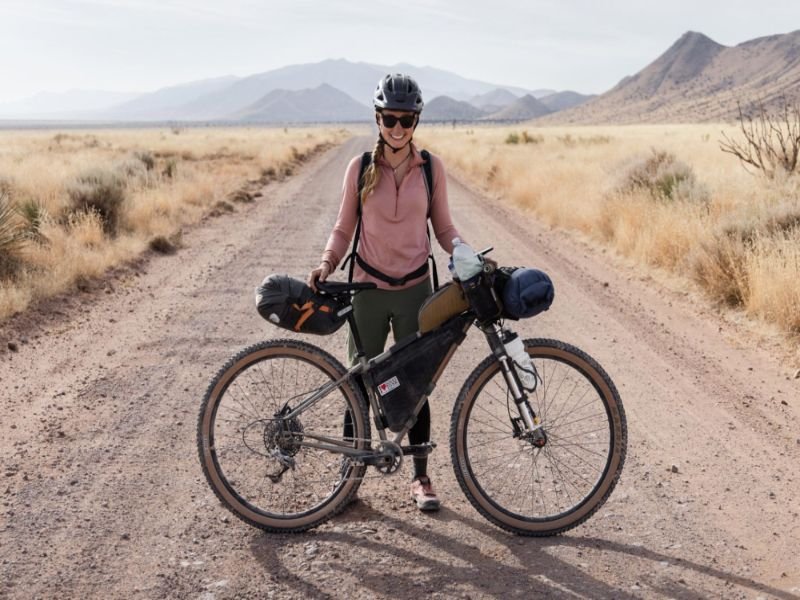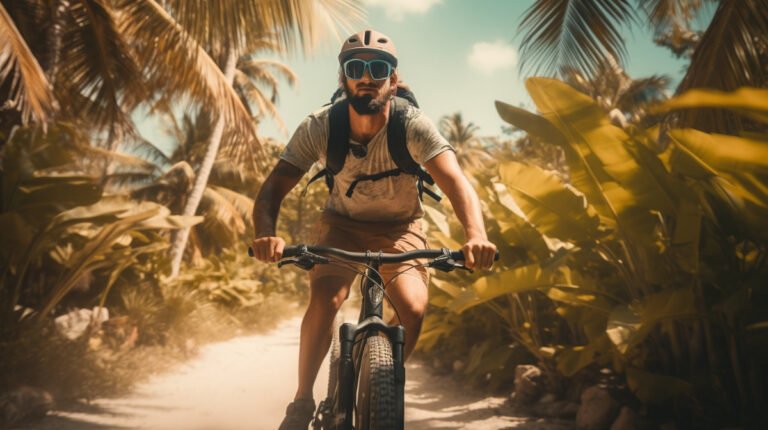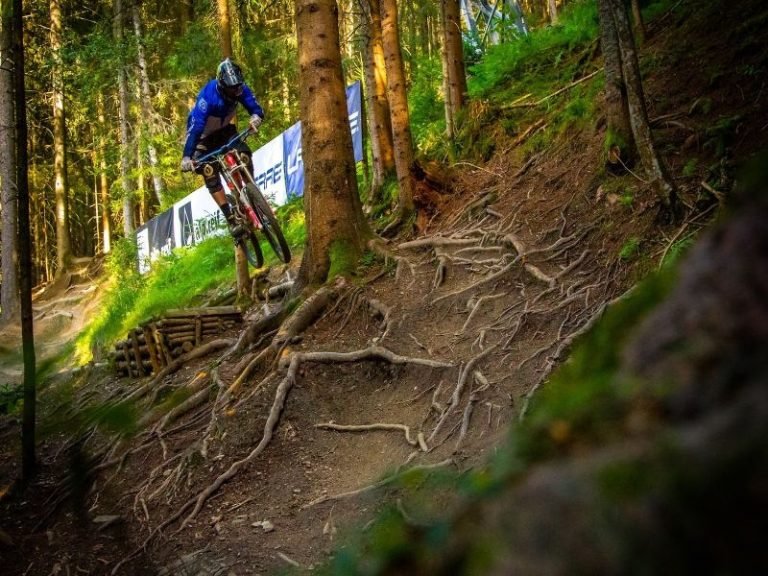Bikepacking Tips
Embark on unforgettable journeys with our essential bikepacking tips. From gear selection to route planning, learn how to make the most of your bikepacking adventure.
Bikepacking Tips
Bikepacking is more than just a trend; it’s a thrilling outdoor activity that melds the freedom of cycling with the self-sufficiency of backpacking.
While traditional cycling tours stick to paved roads, bike-packing ventures off the beaten path, leading you onto gravel roads, dirt trails, and even single-track adventures.
This exciting pursuit involves carrying all your essentials on your bike, enabling you to explore remote and rugged terrain.
Surge in Bikepacking’s Popularity
In recent years, bikepacking has seen a remarkable surge in popularity among outdoor enthusiasts and cyclists of all levels. Several factors contribute to this growing fascination:
Biking Accessories for Bike Commuters
- Authentic Outdoor Experiences: As people seek more authentic and immersive outdoor experiences, bikepacking stands out. It offers a chance to connect with nature, discover hidden gems, and savor the serenity of remote landscapes.
- Advancements in Gear and Technology: The advent of lightweight gear and bike technology has made bikepacking more accessible than ever before. Ultralight tents, compact cookware, and bikepacking-specific models have revolutionized the way adventurers tackle their journeys.
- Pandemic-Inspired Adventures: The COVID-19 pandemic fueled a desire for outdoor activities that enable social distancing. Bikepacking perfectly aligns with this need, allowing individuals and small groups to escape the urban hustle and bustle.
Equipping Yourself for Bikepacking Adventures
Bike Selection and Maintenance
Choosing the Right Bike
Selecting the ideal bike is the keystone to a successful bikepacking adventure. Your choice hinges on the terrain you intend to traverse and the load you’ll carry.
Common options include:
- Mountain Bikes: Ideal for rugged, off-road trails.
- Gravel Bikes: Versatile options suitable for mixed terrain.
- Bikepacking-Specific Models: Tailored for bikepacking adventures with specialized features.
Consider factors such as tire clearance, frame material, and gear attachment points when making your selection. Ensure that your bike suits the demands of your chosen route.
Essential Bike Maintenance
Before embarking on your journey, meticulously inspect your bike to ensure it’s in peak condition. Routine maintenance checks should encompass:
- Brakes: Verify that your brakes function flawlessly.
- Drivetrain: Clean and lubricate the drivetrain for optimal performance.
- Tires: Inspect tire condition and pressure.
- Suspension (if applicable): Ensure it operates smoothly.
Make any necessary adjustments and repairs to preempt breakdowns during your adventure.
Gear Selection
Packing Essentials
Efficient packing is paramount in the world of bikepacking, given the limited space available. Your packing essentials should encompass:
- A Lightweight Shelter (such as a tent or tarp).
- A Sleeping Bag to ensure restful nights.
- Compact Cooking Equipment for meal preparation.
- Clothing Layers suitable for anticipated weather conditions.
- A Repair Kit for on-the-go fixes.
Opt for gear that combines functionality with compactness to save space without compromising comfort.
Lightweight Gear Options
Reducing the weight you carry significantly enhances your bikepacking experience. Explore innovative, ultralight gear options such as:
- Ultralight Tents: These offer low weight and a compact footprint.
- Lightweight Sleeping Pads: Prioritize warmth without bulk.
- Compact Cookware: Choose lightweight options like backpacking stoves.
- Dehydrated or Freeze-Dried Meals: Save space and weight with these meal choices.
Remember that every ounce counts when you’re pedaling for extended periods.
Route Planning
Thorough research of your chosen route is fundamental to a successful bikepacking expedition. Consider factors like trail information, elevation profiles, and recent trip reports from fellow cyclists.
Understanding the terrain, water sources, and potential challenges will enable you to plan your trip effectively.
Map and GPS Navigation
While maps and GPS devices are invaluable tools, it’s essential to have a reliable navigation system. Familiarize yourself with map reading and GPS navigation techniques to prevent getting lost on the trail.
Always carry backup paper maps and a compass as a fail-safe in case of electronic device failure.
Safety Considerations
First Aid Kit
Safety should never be compromised, even in the wilderness. Assemble a comprehensive first aid kit that includes bandages, antiseptics, pain relievers, and essential medical supplies.
Customize your kit to cater to specific needs and any known medical conditions.
Emergency Contacts
Before setting out, inform a trusted person of your trip details, including your route, expected return date, and emergency contacts.
This precaution can be life-saving in unforeseen circumstances. Carry a charged cell phone or a satellite communication device to ensure you can call for help in emergencies.
Packing Strategies for Efficiency
Packing Techniques
Weight Distribution
Achieving proper weight distribution on your bike is crucial for stability and comfort. Position heavier items, such as cooking equipment and food, closer to the bike’s center of gravity.
How to Pack for a Bikepacking Adventure
Maintain a balanced load between front and rear panniers or bags.
Organizational Tips
Efficient gear organization simplifies access and minimizes the hassle of packing and unpacking. Utilize stuff sacks, dry bags, and compartmentalized storage solutions to keep your gear organized.
Essential Gear for Comfort
Shelter (Tent or Tarp)
Your shelter serves as your home away from home. Opt for a tent or tarp that suits your needs and anticipated weather conditions. Ultralight options are excellent choices due to their low weight and compactness.
Sleeping Gear
A good night’s sleep is essential for an enjoyable journey. Invest in a lightweight sleeping bag and a compact sleeping pad. Consider a down quilt or sleeping bag for an optimal warmth-to-weight ratio.
Cooking Equipment
Meal preparation is integral to bikepacking. Select lightweight and compact cooking gear, such as a backpacking stove and cookware. Choose dehydrated or freeze-dried meals to save space and weight.
Clothing Layers
Pack clothing layers suitable for expected weather conditions. Include lightweight, moisture-wicking base layers, insulating mid-layers, and a waterproof outer layer.
Don’t overlook essential accessories like gloves, a hat, and a buff for added comfort.
Food and Water Management
Meal Planning
Careful meal planning ensures you have sufficient sustenance throughout your journey. Calculate calorie requirements based on terrain and daily mileage.
Pack a variety of high-energy, lightweight foods like energy bars, nuts, and dried fruits.
Water Sources and Purification
Identify potential water sources along your route, such as streams and lakes. Carry a water filtration system or purification tablets to ensure safe drinking water.
Refill your water bottles whenever possible to stay hydrated.
On-the-Ride Tips for a Smooth Journey
Riding Techniques
Bike Handling on Various Terrain
Bikepacking routes can traverse diverse terrains, from smooth gravel roads to technical singletrack trails. Enhance your bike-handling skills to confidently navigate different surfaces.
Practice balance, braking, and cornering to adapt to varying conditions.
Pace and Endurance
Maintain a sustainable pace throughout your ride to conserve energy for long days in the saddle. Adjust your speed according to terrain, weather, and your fitness level.
Remember, bikepacking is about savoring the journey, not racing to the finish line.
Campsite Selection
Leave No Trace Principles
Adhere to Leave No Trace principles to minimize your environmental impact. Opt for established campsites when available and camp at least 200 feet away from lakes and streams.
Ensure you pack out all trash and waste, including human waste, to preserve the wilderness.
Safety and Comfort
Choose a campsite that offers safety and comfort. Seek level ground, protection from wind, and proximity to water sources.
Ensure your campsite is far from potential hazards such as dead trees or rockfall zones to guarantee a restful night.
Navigation and Wayfinding
Using Maps and GPS
Stay on course by effectively using maps and GPS devices. Familiarize yourself with map symbols and GPS waypoints.
Keep your devices charged and carry spare batteries or power banks to avoid losing navigation capabilities.
Following Trail Markers
Many bikepacking routes feature trail blazes or markers. Pay close attention to these markers to stay on the right path. They serve as valuable guides, especially in remote areas.
In conclusion, bikepacking offers a unique blend of adventure and self-sufficiency, allowing you to explore the great outdoors on two wheels.
By selecting the right gear, mastering essential skills, and adhering to safety guidelines, you can embark on bikepacking adventures that will leave you with unforgettable memories.
So, gear up, plan your route, and get ready to pedal your way through breathtaking landscapes. Whether you’re a bikepacking novice or an experienced adventurer, there’s a thrilling journey waiting for you on the unbeaten path.
Happy bikepacking!







